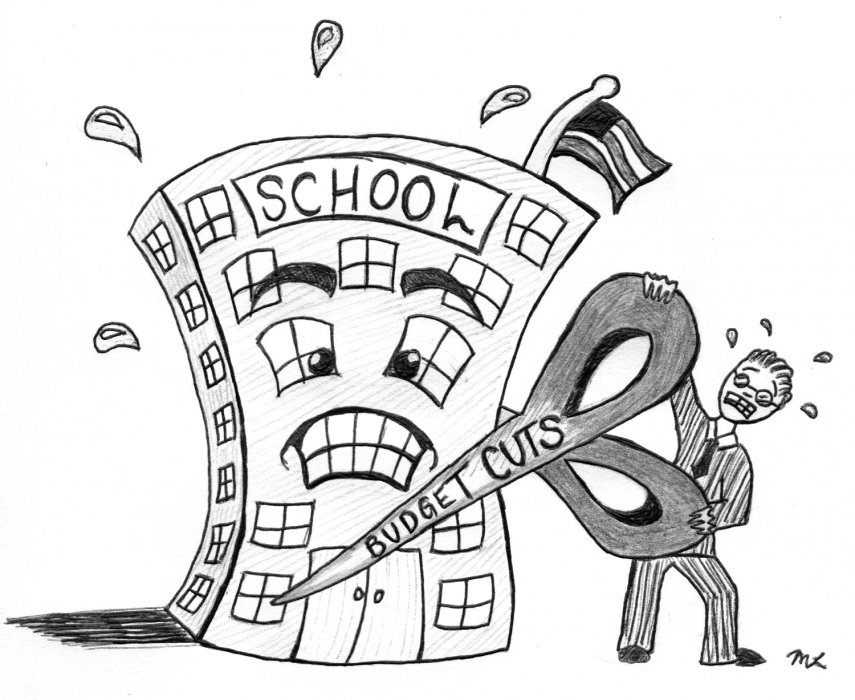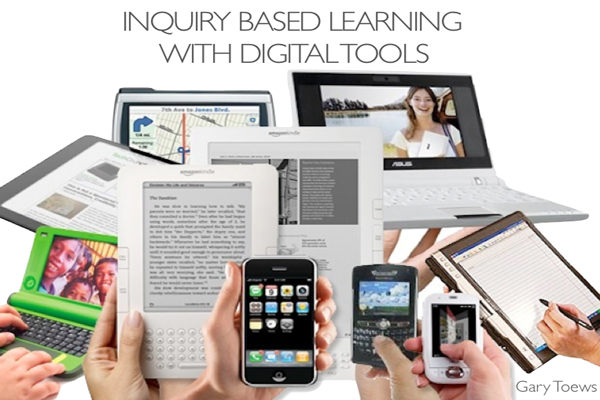The education ‘industry’ has existed since the dawn of time. Sure, there have been different models for how knowledge is transmitted from one generation to another, but that does not alter the fact that mankind’s tenacity to learn is almost primordial.
Education models were largely differentiated till the advent of colonization, and then globalization. The unification of several learning models, with alternative modes included is what forms the bulwark of the education industry today.
The attempt to systematize education has led to industry creation – now, we have several stages which an individual has to undergo in order to qualify as ‘educated’. The various aspects of pre-school, middle school, high school, colleges and universities neatly form a multi-staged construct. This construct extends to governmental and private organizations, both of which have a tacit stake in the educational department.
Education is also one of those sectors that is deemed to be socio-economic in nature, as is healthcare. The government is obligated to educate its citizenry with the means it has at its disposal – the implementation of a concrete educational system is synonymous to development and a higher quality of life.
In this article, we shall outline some of the key challenges in this sector. Keeping the Code-Brew labs approach in mind, we shall also talk about technological disruptions in the industry and contextualize them for overcoming these challenges.
The key idea, as always, is to empower the reader and the potential customer who wishes to venture into the Education Industry – particularly the ‘EduTech’ aspect of the industry.
A STAGNATING INDUSTRY

The potential for disruption in the Education industry is immense, but unfortunately fraught with challenges.
The value of the education market, globally speaking, was $4.9 (USD) trillion in 2015, and that venture capital investment in education companies reached nearly $2 billion in 2014 (after growing at a 45% rate over the past five years). In addition, we are seeing the rise of entire trade associations dedicated to optimizing opportunities for investors looking to capitalize on the education sector. Thus, the shift toward profit motives is clearly apparent.
Education integrates both, the public and private spheres. While on one hand you have the typical notion of schools complete with locker rooms and hard-wired infrastructure, there are also echelons of private seclusion – catering to the cream of the crop inside indulgent, affluent gated environments.
The various actors can be outlined as follows:
Big Education Corporations and Conglomerates
Consultancy Firms like E&Y, PWC applying business education to industries
Advocacy networks that suggest and recommend public policy changes in the field
Public and Private Educational Institutions
Governmental organs handling policymaking matters
Thus, the ‘price’ of education itself is immense when we try setting industry standards. The fact that developing and transitional economies cannot really focus adequately on Education without compromising on spending allocated for other areas is a major problem.
Segmentation is also considered on the basis of learning mechanisms themselves:
Self-Learning based
Institutional Learning
The industry itself, with its established set of norms, rules and regulations has proven to be quite resistant and resilient in its evolution, and adaptation to technology. Here, we outline a few key challenges.
CHALLENGES IN THE MIRE

Accountability
The call for inclusive, more regulated information networks in the realm of education is one of the most repeated. The supervision system on several levels (the local, intermediate and national) was found to be severely lacking, and may stakeholders have raised such concerns in this vein.
Evaluation Inconsistencies
The development of systems and protocols designed to evaluate students is a must, given the inconsistencies that plague these. Their susceptibility to breaches and other vulnerabilities need to be addressed to give all students a fair evaluation.
Access, Lack of Trained Personnel

With the internationalization of education, access becomes a great problem. While developed nations can state otherwise, the ratio of skilled education providers to students is far too imbalanced in developing, and transitory economies. Even in developed nations, the matching of the right kind of talent for the right kind of consumer is a big challenge, often overlooked due to analogous trial-and-error methodology adopted.
Globally, the UN estimates that 1.6 million additional new teachers are required to achieve universal primary education by 2015, and 5.1 million more are needed to achieve universal lower secondary education by 2030. Meanwhile, in one out of three countries, less than three-quarters of teachers are trained to national standards.
Distance from educational institutions, conflict ridden areas, gender discrimination, inflexibility of institutions when it comes to children with disabilities are all factors in this problem of access.
Spending

The reluctant allocation of funds, or in some cases, grossly mismanaged capital when it comes to developing educational infrastructure in countries leads to stunted growth in the sector, restricting access and the delivery of quality education to consumers.
Security and Data Management
90% of large educational organizations had a cyber-security breach last year, resulting in losses to the tune of $1.87 – $3.8 million dollars. The lack of efficient data management tools and analytics, along with strong cyber-security measures was a defining challenge when it came to curating and maintaining records safely and efficiently.
Inflexibility
Technological ignorance facilitated a lack of digital resources being used for education, relegating them to ‘entertainment’ purposes instead. The industry also experiences a lack of innovation as concerns learning models and alternative mechanisms being purported in classrooms and other spaces. Technology is often treated as a cost as compared to a means of saving cost – the centralised nexus of public institutions often prevents such tech from entering mainstream markets.
Networking
Absence of strong Networking and interconnectivity in the educational realm While the age of collaborative learning is strongly being ushered, traditional mentalities which rank institutions – guarding knowledge and resources – are still prevalent, leading to the industry not being cohesive in its growth and development.
OUR OFFERINGS AND TAKE
As a tech company for innovative solutions spanning all sectors, we have certain suggestions so that the sector’s environment does not take you by storm, resulting in the failure of your venture – new, existing or otherwise.
This is our vision of the path things will take due to digital integration in the education sector, and the areas to be focused on to facilitate the same.
Focus: Edutech
The market is scheduled to reach $19 billion by 2018, with global spending on Edutech declare to be as high as $13 billion in 2014 alone. Mobile PC’s and laptops account for 62% of the spread in the industry, given the ubiquitous access to the smartphone the world over. The posited Flipped-learning digital model encourages learning outside a constricted space, making mobile very lucrative – but the industry itself can be rejuvenated in several ways.
A Student-Centric Model
Much like many sectors are slowly moving from their provider-centric approach to one that favours the consumer (healthcare, logistics, you name it) – the education industry is no different. Putting the student at the heart of the decision-making process when it comes to access, choices and investments is being purported by the use of transparent technologies.
The learning experience is being tailored by focusing on individuality rather than offering one-size-fits-all degrees and approaches.
Open Resourcing
Open source and open access resources provide an opportunity for the sharing and developing of diverse content that can address different needs of educators and learners. These resources at lower costs are often flexible and customizable and can be easily shared in networked communities – this includes setting up free-access databases in the form of applications or online, in digital archives for public consumption.
Khan Academy and other ventures point to the creation of such resources.
Advanced Learning Technology – Mobile Based Learning

The integration of new technology in learning modalities is a must. This refers to the use of ubiquitous smartphones as interactive learning and monitoring devices, along with other applications on various digital platforms that can facilitate this learning in classrooms and beyond.
The convergence of digital and analogous modes of teaching creates hybrid models that can be used for holistic learning, which is already being seen in classrooms worldwide.
By the end of this year, the mobile market is expected to consist of over 7 billion accounts (equating to about 3.4 billion users, or one in every two people on the planet); mobile traffic on the Internet is expected to surpass desktop traffic; and mobile users will have downloaded 70 billion apps across smartphones and tablets. Educational apps are the second-most downloaded in iTunes of all categories, surpassing both entertainment and business apps in popularity.
Big Data, Analytics and Cloud Computing

The cloud-based Brazilian Electronic Learning Organizer helps language teachers produce and share digital learning objects and activities for their students. The Global Curriculum Project allows students to participate in a virtual exchange program with school across five different countries. These are just a few examples of cloud campuses being utilised, with ample scope for more in order to improve access and connectivity throughout.
Learning analytics already have a significant impact on the evolution and refinement of both K-12 and higher education, especially in the design of personalized and online learning platform – they provide insights into students’ study habits and behaviours, facilitate anonymous, peer-to-peer feedback and grading and monitor progress to create a highly tailor-made system of learning.
These can also give insights into how to improve policies regarding education by aggregating and analysing student data on a large scale.
Gamification

The integration of mobile and digital gaming apps and technologies into the world of education is yet another impactful innovation. “Game-Based Learning” as a field of practice has expanded far beyond integrating digital and online games into the curriculum.
Wearable Technology

One of the most promising potential outcomes of wearable technology in higher education is productivity: tools that could automatically send information via text, e-mail, and social networks on behalf of the user—based on voice commands, gestures, and other indicators— that would help students and educators communicate with one another, keep track of updates, and better organize notifications.
Google Glasses and other such tech can be effectively remodelled to suit students’ learning needs and be integrated as productivity boosters in the traditional classroom environment. Entire virtual platforms can be used instead of physical infrastructure, saving costs and increasing learning potential.
Ubers for Tutors

Lastly, as there happens to be an Uber for everything, education is no exemption. The Uber for tutor range of start-ups try facilitating the student-centric model by providing help via networking and utilising stagnant potential in fellow students and the untapped teacher segment. These mostly come in the form of apps and online dashboards that use algorithmic models to match students and tutors, along with location services to demarcate learning zones – within universities or otherwise.
In conclusion
As can be anticipated, it is a very exciting moment for the Edutech industry. The sector will surely face tremendous disruption with every new technological innovation.
We consider it our duty to inform potential clients of the perils, and advantages to be found in every sector. We also consider it our privilege to work with those who are interested in augmenting their ideas with powerful technology. We are eager and only too happy to walk you through the possibilities of these measures, targeting key concerns in the sector itself, so that your business can bloom with minimal hitches.
All the technological solutions mentioned above – in the realm of big data, analytics, mobile app development, the engineering of virtual architecture and so on – can be found by working with us, in the most cogent manner possible. We will be honoured to help your venture disrupt the transportation vertical – all you need to do is take the first step, and open a dialogue with us.






